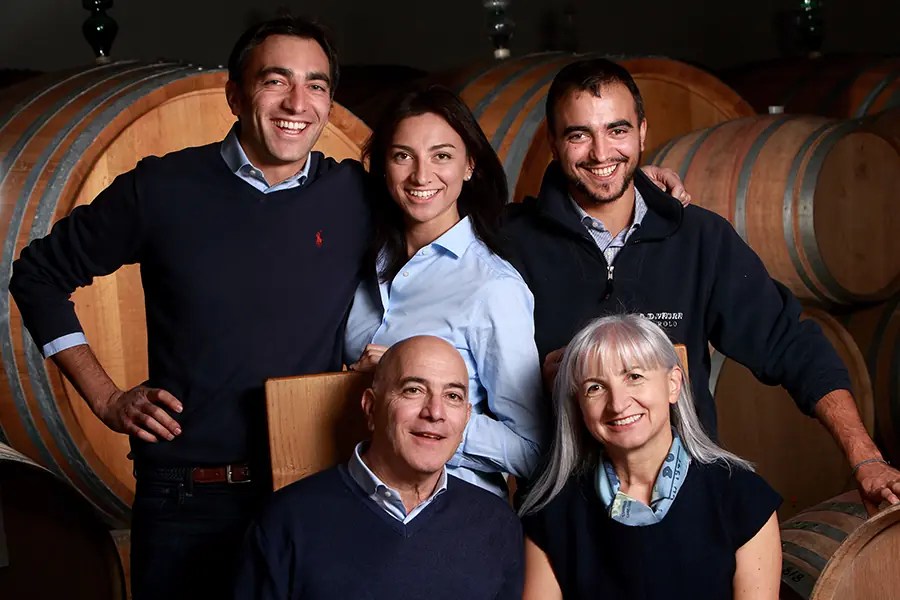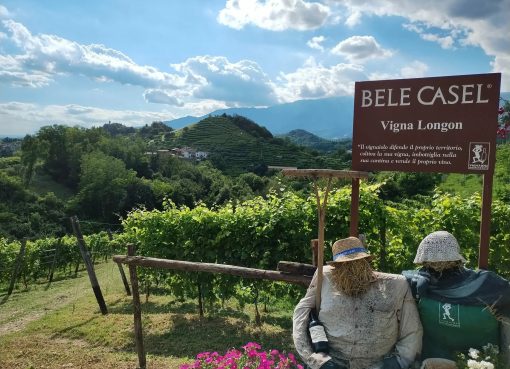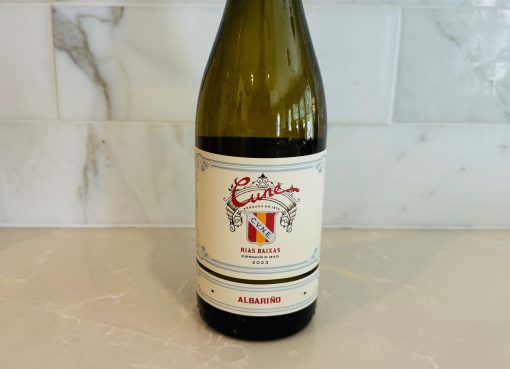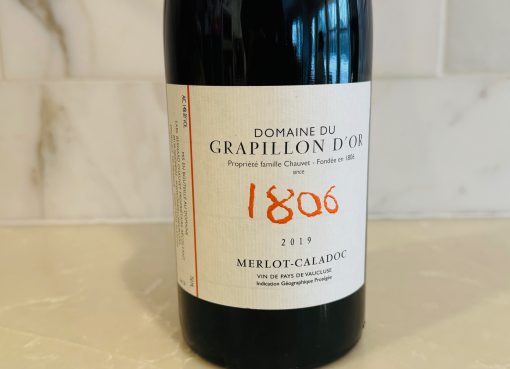Hard Work, Hard Rock, and Desperation: G.D. Vajra Recent Releases

For several years now, I have often wondered why the wines of Piedmont’s G.D. Vajra don’t rake in 98+ points like, all the time. Sometimes I think that the major critics just don’t “get” what these wines are all about.
Which seems even stranger, now that I think of it, considering that it took me all of just one tasting at VinItaly to absolutely “get” their wines.
Anyway…
I was more than happy to attend a tasting of samples of G.D. Vajra’s recent releases, virtually led by Giuseppe Vaira, who heads up winemaking as part of the two generations of family now working the estate. Located west of the village of Barolo, G.D. Vajra’s farm sees cooler nights (thanks to winds from the nearby mountains), and I probably don’t need to get into the hundred+ year track record of the region being able to ripen grapes properly in those cooler environs.
“My grandparents were desperate” when they started farming in the area, noted Vaira (in reference to grandad Giuseppe Domenico, the “G.D.” in the G.D. Vajra name). At that time, the region had just suffered several hail storms in a row, so it wasn’t exactly a spot people were clamoring to plant. But Piedmont was a place where people went at the time seeking fresh starts after WWII, and that included his grandparents. His parents, on the other hand, were city kids: “my dad was a bit rebellious,” he mentioned, marching with protest crowds in Turin. His punishment? Working on the farm. As a corrective means, it appears to have backfired (or, maybe succeeded too well?), as Giuseppe’s father subsequently fell in love with farming. But that rebellious streak must have run deep, and it continued, as he “was embracing organic farming since 1971” despite the push for volume over quality that was prevalent in farming at the time.
Farming their estate is still difficult, according to Giuseppe Vaira, just not for the same reasons now that quality trumps quantity. “We do like hard work. Harvest for me is always the best time of the year.” Suuuuure it is, bro…




2022 G.D. Vajra ‘Coste & Fossati’ Dolcetto d’Alba, Piedmont, $25
Sourced from two vineyard, this red is from older vine plantings started in the 1970s, during a time when Dolcetto was largely “neglected” when mechanization enabled expansion of more profitable varieties (often marginalizing Dolcetto to lesser sites). This is “the wine that opens up the heart of our father the most,” according to Vaira, as it showcases Dolcetto on sites that would be prime locations for more expensive Nebbiolo. Earth, juicy sour cherry, rose petals to start. Authentic, and almost rustic in its bold acidity, spice, structure, and earthiness on the palate. Tangy, chewy, and delicious, this finishes long and savory, and could handle all manner of Italian fare from simple pastas to roast meats.

2022 G.D. Vajra Barbera d’Alba Superiore, Piedmont, $48
Sourced from the Bricco Bertone vineyard, with steep slopes and soils that promote deep root growth (“like a natural jackhammer, trying to find its was down” is how Giuseppe put it), resulting in naturally lower yields. Plummy and powerful, with blue and black fruit action, hints of violets and soil, and lovely balance in the mouth, with great dark cherry fruit flavor and abundant acidity. This is absolutely JUMPING on the palate, it’s so vibrant yet never gets tiresome despite all of that energy. Lovely, long, and full of life. And with such great acidic scaffolding, this will likely age well, too.

2021 G.D. Vajra Freisa ‘Kyè’ Langhe Rosso, Piedmont, $48
The name is a play on a phrase meaning “who’s that?” which takes a friendly jab at Freisa’s relatively unknown status globally. Another single vineyard release, from plantings started in 1980. This variety (a close relative to Nebbiolo) was traditionally used to make Vermouth, and that market collapsed when the USA implemented Prohibition and Freisa subsequently fell out of fashion. The nose shows itself as tangy, peppery, perky, spicy, with dried flower petals, red cherries, redcurrants, some earth/funk, and dried cranberry. All of that translates pretty directly into the palate, with more seriousness in how its raging acidity is presented. A long finish that flirts with tannic grip, cola, and rose petals. An acquired taste? Maybe, but also a damned tasty one.




2020 G.D. Vajra ‘Coste di Rose’, Barolo, $75
“The key of the vintage,” explained Vaira “was flowering. The size of the flowers is affected by the weather,” and the sizes “set the relationship between the berry and the juice” later in the developing grapes. 2020 had excellent flower development, and he was “ecstatic” over the flowering when checking on the vines. For him, this translates into great structure but with additional fruitiness. This vineyard is the lowest in elevation for their Nebbiolo plantings. It sits between some of the most well-known Barolo vineyard sites, but is much smaller and more difficult to see (and more prevalent with sandstone soils), so it is considered a hidden gem. Lovely at first blush. Roses, violets, perfume, some dark pepper spice, earthiness, and bold red fruit action. Lifted on the nose (he compares it to having “reverb on a guitar” thanks to the sandy soil), it’s impeccable on the palate and already juicy and delicious, with great balance between power, floral notes, ripe red fruit flavor, and acidity, with tannins that are gorgeously elegant. It would be incredibly difficult not to drink this seductive red straight away, despite the fact that it will definitely age well in bottle.

2020 G.D. Vajra Ravera, Barolo, $90
Marl soils with iron oxide stripes dominate this vineyard. Continuing his guitar and music comparisons, Vaira added that “Iron is a distortion pedal, it gives a kick to the wine.” This Barolo is floral, but in a more assertive way than the Coste di Rose. It’s red fruit dominant, also in a more serious way, and by all indications this is a wine that is not fooling around. Its earthiness is a bit darker, a bit deeper, and its presentation is more mineral. This has higher octane acids, and slightly more aggressive tannins than the Coste di Rose, with tinges of leather and tobacco spice. It really does feel like the overdrive effect is on, and it’s ripping a solo that is at once rocking and showy, but also challenging and complex (think Dream Theater).

2020 G.D. Vajra Bricco delle Viole, Barolo, $95
This is from their highest elevation Barolo plantings, consisting of older vines, that enjoy a long hanging period during fruit maturation. “It’s not as ‘hard rock’ as the Ravera would be,” Vaira said, “it’s more nuanced, more mysterious, more restrained.” Rosy, perfumed, with deep cherry fruit tones, the floral components are dark and deep here. There is a great palate tension between the acidity and structure, and the juiciness and substance. The layers just keep coming, more in depth than in sheer complexity; the waves are deep in these waters, for sure. If you love your Barolo fresh, long-lived, and authentic, this one is for you.
Cheers!



